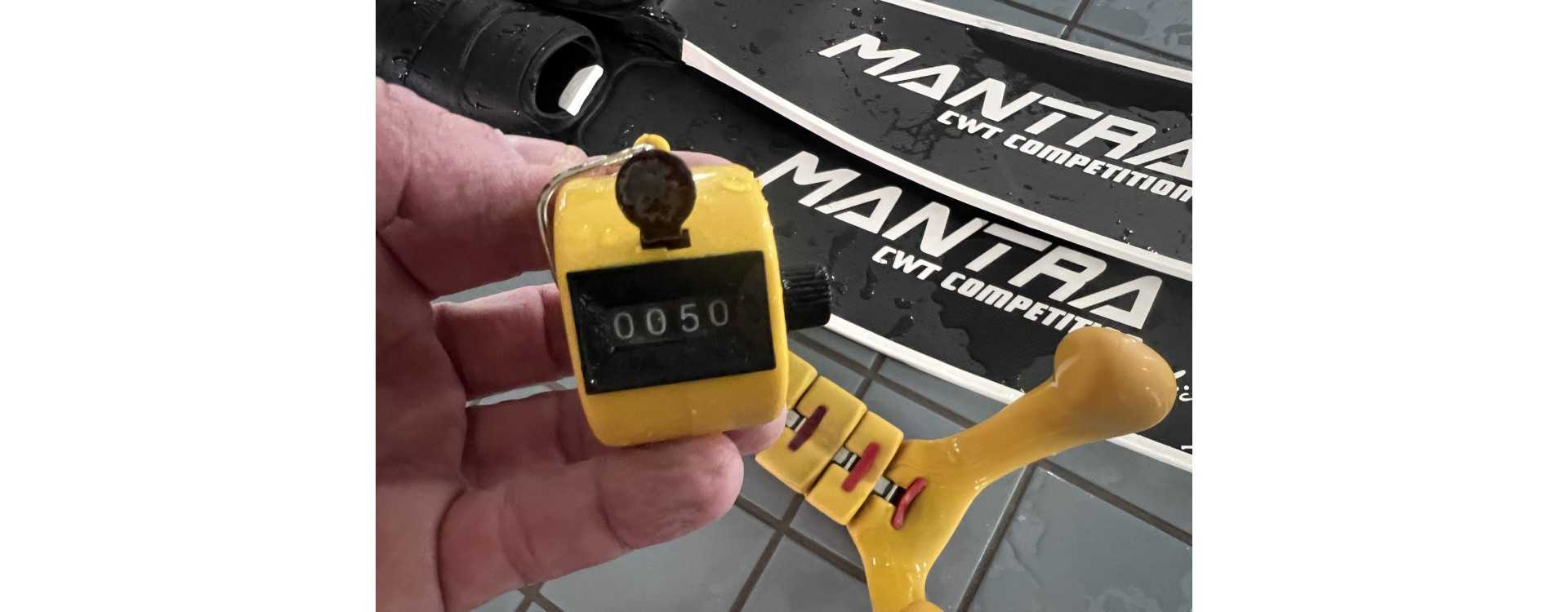Indoor pool training on Friday 15 December 2023 was a highlight.

Enjoyment of Monotony
Monotony is a very negative term: "How do you like your new job?" Answer: "The job is dull and monotonous, I'll find something more varied!"
The first time I noticed that monotony can be something very beautiful was when I took part in an experiment as part of an apprenticeship at the University of Zurich some 30 years ago. The experiment was called "The Colourful Paper Factory" or something like that and was carried out by an employee at the Institute of Occupational Psychology. We were divided into two companies, each participant was assigned a function, there was a large organisational chart on the wall and we were anxiously waiting for the first orders. This then gradually came into play in the sense of "ordering 10 wind turbines in red". "Windwheels" are these objects folded out of a leaf that you can pin to a stick and spin in the wind. The joke of the exercise was that we were forced to work in an extreme division of labor. Someone counted the right number of leaves in the desired color and passed the pile on. The next person made the first fold diagonally and passed the paper on. So it was a simulation of assembly line work, as it was done at the beginning of industrialization.
We were then made to work for about 2 hours, the orders became bigger and more complex "20 windmills in red, 20 in green and 10 in blue" and each one of us always did exactly one hand. After the exercise was finished and the windmills almost went to the ceiling, we were asked about our feelings. Most of them described negative feelings of powerlessness, stress, and the feeling of being just a small cog in a big machine. But there were also positive comments in the sense of, "I could just switch off, and eventually my hands did the automatic grip."
During a tour of the Bernina company in Steckborn, a few years later, we were told a similar story by the CEO, who showed us around: The job consists essentially of soldering, screwing parts together and then passing the part on. Various attempts had been made to break the monotony with job rotation and the like, but it had been discovered that the female employees (the vast majority of the employees were women part-time) did not want this at all. The best thing they would like to do year after year is to do the same things and talk to each other. For them, the activity is like knitting, which largely consists of doing the same movements all the time.
Applied to freediving, there are a few exercises that are also based on the principle of monotony. Today I trained one of them again during my Thursday training in Wiesendangen. It is a small school indoor swimming pool with 4 lanes 16.6m (1/3 of 50m) long. We usually do a very varied workout with stretching at the edge of the pelvis, then static with empty lungs, then an individual immersion and then joint exercises such as DYN-STA-DYN with progressively longer static periods. Finally, there are often playful elements such as crawling or diving through cupboards or speed-flapping on the surface.
But sometimes I come to training and I don't feel like playing games, changing things or talking, but just want to walk my paths in peace. So again today and so we did "mile diving" as two of us, while the rest of the group did their training. "Mile diving" is the same thing as diving 100 lengths of 16.6m, which is about one English mile. I have done the exercise, which lasts about an hour, today in such a way that I have always formed units of 10 double lengths. So first 20 individual lengths of 16.6m with very short breaks (i.e. a CO2 training) and then 10 double lengths of 33.2m with 30 second breaks.
During this workout, I develop a calmness and serenity within the first 10 minutes that I can't achieve in any other form of training. I don't think about anything, I feel the up and down of the fins (I did the exercise today with the bifins) and so I reel off length by length. In this exercise, I initially focus on correctly executing the motion sequences, so that my fins don't flap together, and I do the same amplitude of motion up and down. After a while, my body just goes, my brain runs the test image, and before I know it, the hour is up and I'm 100 lengths behind me.
Tip from me: Buy one (or more) of these "Tally Counters" or "Hand Counters", and you will save yourself the intellectual effort of counting and remembering how many double lengths you already have. You can get these Tally Counters on eBay or direct shipment from China for a bread of butter. In the wet environment in which we move, they don't last forever (my modern ones are wet in the dive bag after training) but they last for a few years until the gearbox, consumed by chlorine and rust, gives up its mind.
Maybe you also want to try this form of training and find pleasure in the monotony? I would be very happy if you would share your experiences with me and my readers in the comments.












Leave a comment
Log in to post comments